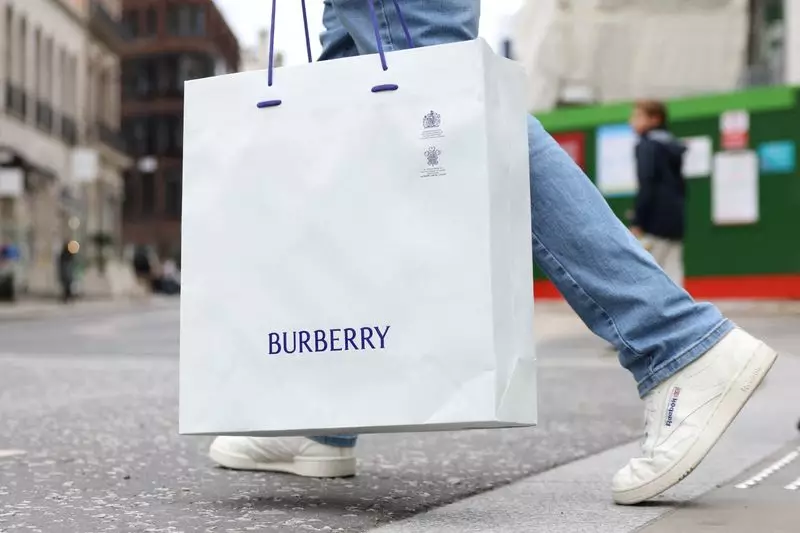The luxury retail sector has been facing a tumultuous landscape marked by fluctuating consumer confidence and changing shopping habits. However, recent results from Burberry suggest a glimmer of hope, marking what may be the beginning of a significant turnaround for the iconic British brand. This period could redefine not just Burberry’s trajectory but also reshape perceptions within the broader luxury market.
Quarterly Performance: A Positive Surprise
On the heels of the holiday season, Burberry announced a less severe decline of 4% in its quarterly comparable store sales, a figure that outperformed analysts’ dour predictions of a 12% drop. This modest decline signals a potential resurgence in consumer interest and demand, particularly in the United States, where many luxury brands have struggled to retain their market share. Shares of Burberry surged by 12% following the announcement, suggesting that investor sentiment is beginning to shift favorably as confidence ebbs back into the luxury sector.
Joshua Schulman, who assumed the role of CEO just six months prior, has implemented decisive changes aimed at restoring the brand’s appeal. Schulman’s focus on amplifying Burberry’s heritage collections—including its signature trench coats and cashmere scarves—kicked off a renewed marketing campaign that resonated across demographics. This pivot toward recognizable and classic offerings instead of lesser-known designs appears to be a winning strategy, as Schulman noted increased customer growth in the month of December for the first time in over two years.
Furthermore, the luxury retailer’s value proposition is evident in its premium pricing strategies, with cashmere scarves priced between £420 and £990 ($522-$1,230) showing robust sales. This strategic positioning reflects a keen understanding of market dynamics that favor quality over quantity in high-end consumer goods.
Sales trends reveal a notable disparity across regions, with the Americas leading the charge as Burberry revitalized its flagship store in New York City. The refurbished outlet on 57th Street has become a beacon of “uber-luxe” appeal, bolstering sales growth by 4% in the region. Meanwhile, Asia Pacific, although still feeling the pinch with a 9% decrease in sales, has shown signs of recovery from a more significant 28% decline in the previous quarter.
Burberry’s CFO, Kate Ferry, hinted at a cautious optimism in consumer demand, particularly in China, a market critical for the brand’s future. The company’s efforts in enhancing its product diversity and elevating the in-store consumer experience seem to be paying off, evidenced by the recent opening of a new store in Beijing, which is anticipated to further bolster Burberry’s market position.
With the third-quarter retail revenue amounting to £659 million ($818 million), although lower than the corresponding period from the previous year, there are encouraging signs that Burberry could move towards profitability by the end of the financial year. The anticipated stabilization of demand in China, coupled with effective inventory management tactics including strategic markdowns, has led analysts to reassess their projections for the brand’s performance.
Emerging data from competitors like Richemont and Brunello Cucinelli further supports this positive outlook for luxury retail. As perceptions shift and luxury demand begins to recover, Burberry stands at the forefront of this transition, skillfully utilizing its brand heritage in a contemporary context.
Burberry’s recent performance and strategic maneuvers present a promising outlook for the brand and the entire luxury retail sector. As the industry braces for evolving consumer preferences and macroeconomic challenges, the steps taken by Burberry may serve as a blueprint for revitalizing other brands striving to reignite interest in their offerings. The luxury market may indeed be on the precipice of recovery, with Burberry leading the charge.

